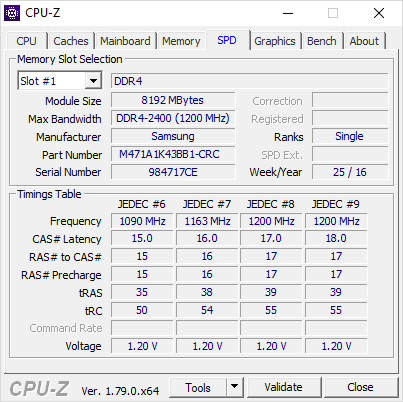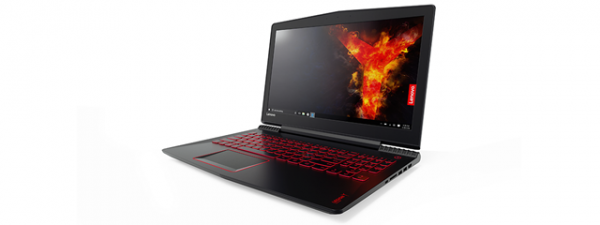
ASUS ROG GR8 II is a very exciting mini gaming PC that promises to offer a lot of power in a small central unit that rivals your gaming console. This mini PC looks great, comes in several hardware configurations, is VR Ready and fits anywhere in your home, including in your living room. And since it is designed for gamers, it features some interesting lighting effects. If you are curious about what it has to offer, read this review for the ASUS ROG GR8 II:
Unboxing the ASUS ROG GR8 II
ASUS ROG GR8 II comes in a good looking box with all the visual elements that are classic to the Republic of Gamers brand. However, you don't get a picture of this mini gaming PC or information about its hardware configuration.
Inside the box you will get the mini PC itself, the power adapter (which is quite large, typical of a gaming laptop, as you can see in the picture below), the warranty, the user manual and the quick start guide. In some markets you may also get a keyboard and a mouse. However, we didn't have them in our packaging.
Unboxing everything is very quick and easy. Looking at the ASUS ROG GR8 II for the first time is a very nice experience and you will surely enjoy how this mini PC looks.
If you want to see more about they way it looks, here's the right side cover. As you can see it has a glass triangle with mayan-inspired engravings.
On the left side you have the Republic of Gamers logo engraved.
The unboxing experience is quick and painless. You can take the ASUS ROG GR8 II out of its packaging in just a matter of seconds so that you can enjoy just how good it looks.
Hardware specifications
The ASUS ROG GR8 II is available in several configurations. First of all, we can choose between four processors: Intel Core i5 6400, Intel Core i5 7400, Intel Core i7 6700 and Intel Core i7 7700. We received the version with the best processor available: Intel Core i7 7700, which is a four-core processor, with eight execution threads, that runs at a base frequency of 3.60 GHz and can go up to 4.20 GHz in Turbo mode.
The RAM memory available varies between 8 GB and 32 GB. The Intel Core i5 versions generally come with 8GB or 16GB of RAM while the Intel Core i7 come with 16 or 32 GB. The version we received for testing had 16GB of DDR4-2400 RAM, made by Samsung. You can view its specifications in the screen capture below.
The graphics card seems to be identical to that on the ASUS VivoPC X, which we reviewed a couple of weeks ago. It is an NVIDIA GeForce GTX 1060 video card, with 3GB of GDDR5 video memory and native support for DirectX 12. You can connect up to three displays to it, simultaneously.
Storage is another variable that you need to consider. You can have an Intel SanDisk M.2 SSD drive with a capacity that varies from 128GB to 512GB or a traditional hard disk with a size that varies from 500GB to 1TB. The storage is very important for a gaming system so make sure that you buy a version with an SSD drive for maximum performance. The version we received for testing had a 256 GB SSD drive. You can see some of its characteristics in the screenshot below.
In terms of ports and connectivity, ASUS did a great job with this mini PC: you get two HDMI ports, one DisplayPort, two USB 3.0 ports, one USB 3.1 Type A port, one USB 3.1 Type C port, 1 Ethernet port, a Kensington Lock, the power jack, one optical S/PDIF out and one audio jack. Some ports are also on the front side of the ASUS ROG GR8 II, for easy access.
ASUS brags about offering some of the best possible network connectivity options. We get the Intel Ethernet (I219-V) adapter for fast 1Gbps wired network connections and the Intel Dual Band Wireless-AC 8260 wireless network adapter, with support for the 802.11ac networking standard and 2x2 MIMO transfers. Since we are talking about a premium device, designed for gamers, we would have preferred support for 3x3 or 4x4 MIMO transfers, in-line with ASUS best wireless routers. On the upside, the two WiFi antennas of the ROG GR8 II are situated on top of the chassis for better signal transmission, and are shielded between the plastic and metal cases to prevent interference from other components. It was a pleasant surprise to see that there's also TPM 2.0 chip available, for system encryption.
One of the big things about this system is the Aura Sync RGB LED lighting. With the appropriate software, you can use twelve peripheral synchronization modes and ten different lighting effects for great customizability.
ASUS ROG GR8 II is a 4-liter mini gaming PC that competes in size with consoles like the Xbox One and the Playstation 4. It has a size of only 3.46 x 11.77 x 11.07 inches or 88 x 299 x 281.3 mm in Width, Depth and Height. Without the power adapter, this device weighs a total of 8.8 pounds or 4 kilograms, making it easy to carry to LAN parties.
If you would like to check the official specification of this mini gaming PC, go to this page: ASUS ROG GR8 II Specifications.
Using the ASUS ROG GR8 II
One of the main selling points of the ASUS ROG GR8 II is its Aurora lighting system. The system works well and it is generally interesting. Some of the default lighting modes are quite kitschy and flashy, while others look great. One of these lighting modes is especially useful because it lights up based on how hot the system gets, giving you visual cues that you have played for too long and you should take a break.
Another important concern for people that buy mini PCs is their noise level. ASUS brags about the low idle noise of only 23.8 dB. We can confirm that this is the case. When you don't use it, or when you perform light computing tasks like browsing the web or standard Office work that doesn't stress the graphics card, ASUS ROG GR8 II is a very silent PC. You can barely hear it. However, things change considerably when under full load. After playing demanding games for an hour or so, at high quality settings, you will hear the fans quite loudly.
Luckily, temperatures are within normal intervals for gaming systems, even though we are dealing with a mini PC that's packed with powerful hardware. To keep things cool, ASUS has created two separate chambers for the processor and the graphics card, which you can see below.
In the picture below you can see the vents through which the air is pulled into cool the graphics card. They are on the bottom ASUS ROG GR8 II, alongside the rubber feet that allow it to remain stable on just about any surface.
Another important factor for gamers is upgradeability. In order to keep things this small, ASUS had to create a custom motherboard and the video card is soldered onto it. Therefore, you can't really upgrade this system. The only thing you can do is add or change the M.2 SSD drive. This is disappointing for gamers and a sacrifice they have to accept if they want a small form factor like this one.
The operating system installed on the ASUS ROG GR8 II is Windows 10 Home and it works great. This PC can handle gaming, VR, office work and all kinds of multimedia activities. We would have preferred to have the option to upgrade to Windows 10 Pro, so that we could enjoy the benefits of system encryption and control over Windows Updates but most gamers will be happy with Windows 10 Home. We played games like Doom and The Witcher 3 on high quality settings, at Full HD resolution and we had no issues. Our gaming sessions were fluent, without any hiccups.
ASUS ROG GR8 II impressed us with its small size, good looks, illumination system and very good performance. It's a great performer in modern-day computer games and VR experiences. It's only major downside is the noise it makes when under full load for long periods of time.
Go to the next page in our review to learn more about the apps bundled with ASUS ROG GR8 II, its performance in benchmarks, and our final verdict.


 31.05.2017
31.05.2017 















